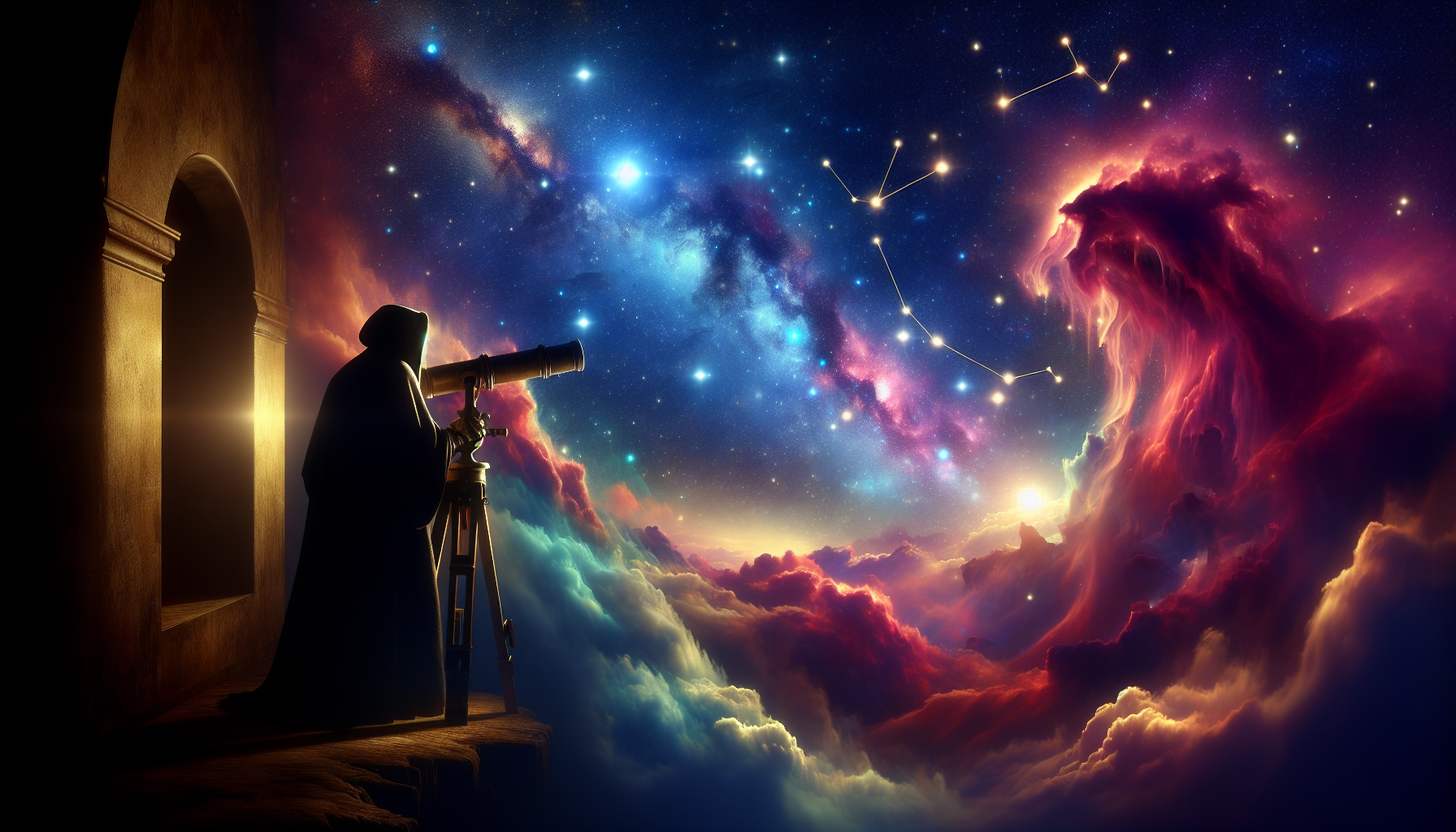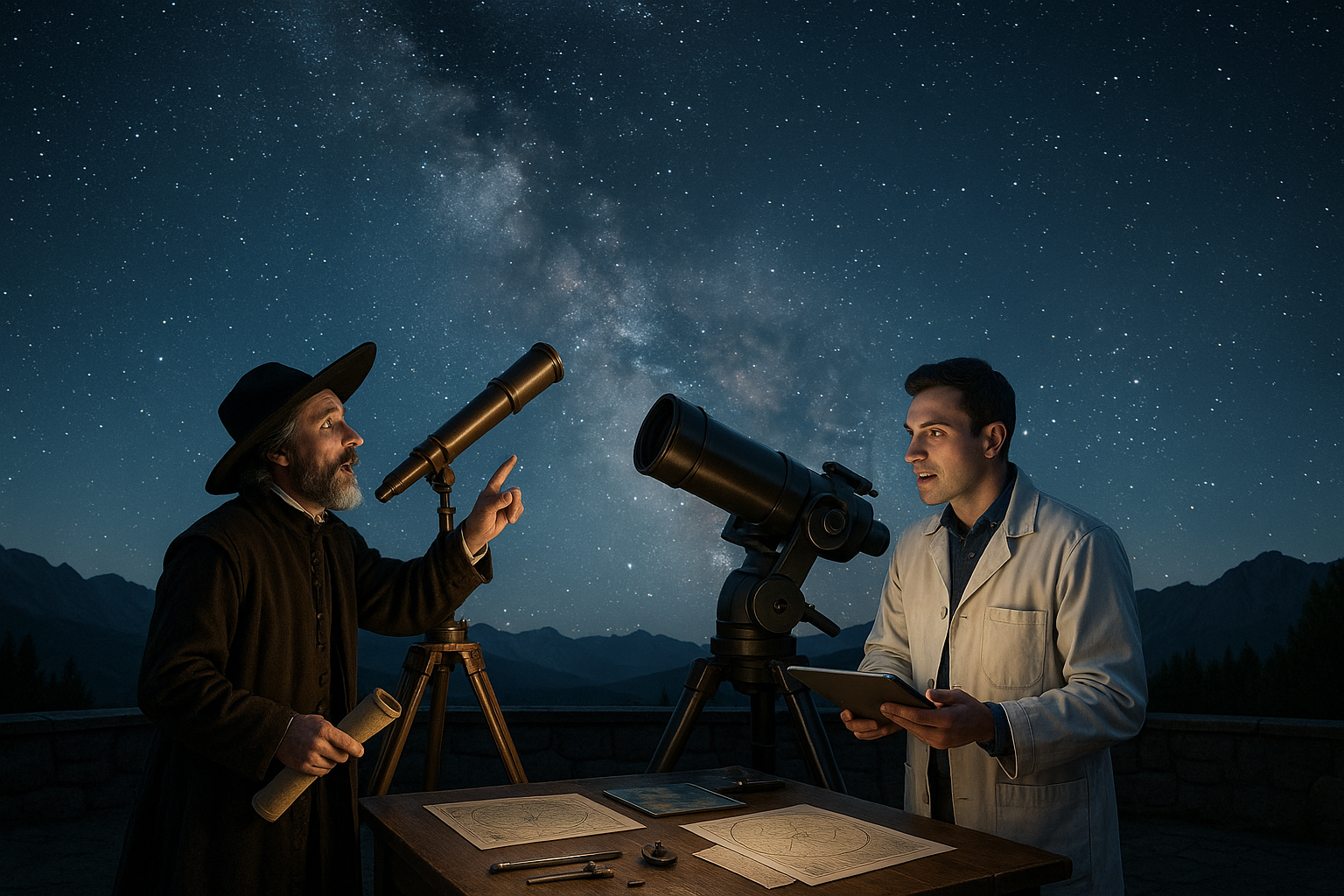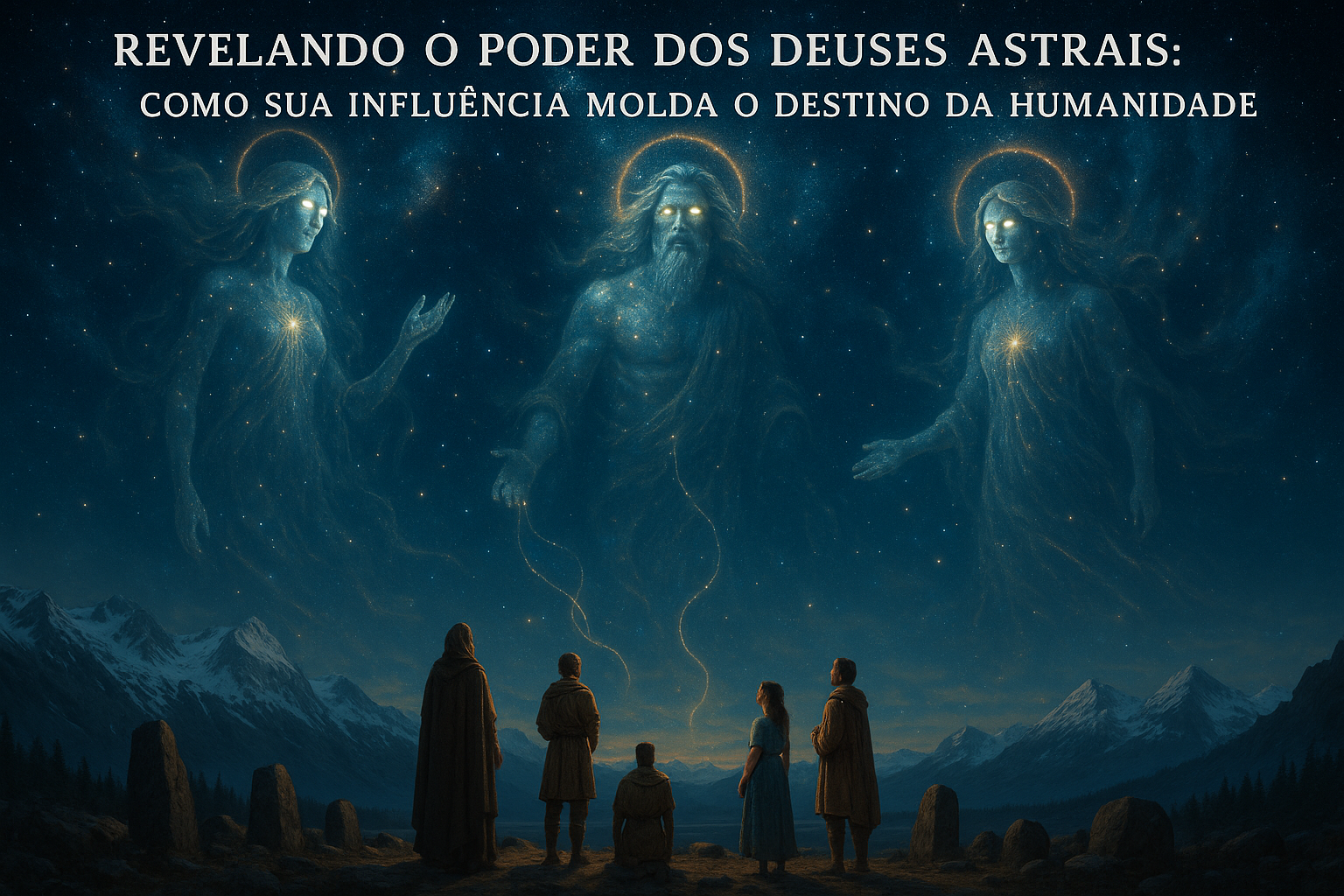In the vast expanse of the cosmos, where darkness stretches into infinity and the silence is profound, a mesmerizing drama unfolds—one that has captivated the human imagination for millennia. This is the saga of stars: colossal celestial bodies that light up our night skies and, through their birth and eventual demise, weave the very fabric of the universe. Since ancient times, these luminous orbs have inspired countless myths and legends, tales that transcend cultures and epochs, each seeking to explain the mysteries of star birth and death. 🌌
From the ethereal beauty of a star being born from swirling clouds of gas and dust, to the awe-inspiring spectacle of a supernova—where a dying star’s light can outshine an entire galaxy—stars have always been sources of wonder and curiosity. The myths surrounding their existence serve as mirrors reflecting our own existential quests. How did we come to be? What happens when we die? These celestial narratives are not just stories; they are profound philosophical explorations that delve into the very nature of life and death, creation and destruction, chaos and order.
In this cosmic journey, we will unravel the intricate tapestry of star mythology, traversing cultures from the ancient Babylonians to the indigenous peoples of the Americas, each offering unique perspectives on the origins and fate of stars. We will explore how these myths have evolved alongside scientific discoveries, illustrating a fascinating dialogue between imagination and empirical observation. Furthermore, we will examine the symbolic meanings attributed to stars and their life cycles, shedding light on how they have influenced art, literature, and even our understanding of humanity’s place in the universe.
Prepare to embark on a voyage through time and space, as we uncover the legends that illuminate our skies and ponder the eternal questions they provoke. Whether you’re a seasoned stargazer or a curious novice, this exploration promises to enrich your understanding of the cosmos and the timeless stories that seek to explain its wonders. So, gaze up at the stars and let your imagination soar, for the myths of star birth and death await to unveil their secrets and inspire a deeper appreciation for the universe we inhabit. ✨
The Mystical Origins of Stars: From Cosmic Dust to Celestial Giants
The birth of stars is a captivating tale that has intrigued astronomers and storytellers alike for centuries. From ancient mythologies to modern scientific theories, the origins of these celestial giants have been shrouded in mystery. Ancient civilizations often attributed divine qualities to stars, considering them to be the souls of deities or ancestors, twinkling eternally in the vast sky. Today, however, we understand the birth of stars through the lens of astrophysics, which reveals a process both awe-inspiring and complex.
Stars are born in nebulas, vast clouds of gas and dust scattered throughout galaxies. These regions, often referred to as stellar nurseries, are teeming with the raw materials necessary for star formation. When a disturbance such as a shock wave from a nearby supernova compresses parts of the nebula, gravity takes over, causing the gas and dust to collapse into denser regions. Over time, these regions become hot and dense enough for nuclear fusion to ignite, giving birth to a new star. This process is a delicate balance of physical forces and conditions, each star beginning its journey as a protostar before reaching the main sequence stage.
From the primordial myths of creation to the precise calculations of modern science, the story of star birth is rich with intrigue. The ancient Greeks believed that stars were the fragmented remains of the Titans, while the Native American Lakota saw them as “the people of the sky.” Today, we continue to explore these cosmic legends, marrying the stories of old with our growing understanding of the universe. To gain a deeper appreciation for the wonders of star birth, watch this insightful video on star formation by Space Odyssey.
The Life Cycle of Stars: A Journey Through Time and Space
Once a star is born, it embarks on an incredible journey that spans millions to billions of years. This life cycle is marked by stages of growth, maturity, and ultimately, death. A star’s mass is the primary determinant of its fate. Low-mass stars, such as red dwarfs, have lifespans that can exceed the age of the universe, slowly burning their fuel over trillions of years. In contrast, massive stars live fast and die young, often ending their lives in spectacular supernovae.
As stars exhaust their nuclear fuel, they undergo significant transformations. Low to medium-mass stars, like our Sun, swell into red giants before shedding their outer layers to form planetary nebulas. The remnant core becomes a white dwarf, a dense object that will gradually cool and fade over time. Massive stars, on the other hand, experience a more dramatic end. They may collapse into neutron stars or black holes, enigmatic entities that challenge our understanding of physics.
The life cycle of stars is a testament to the ever-changing nature of the cosmos. As stars die, they return their enriched material to the galaxy, seeding new generations of stars and planets. This cosmic recycling is a fundamental process in the universe, ensuring the continuity of stellar life. Explore more about the fascinating life cycle of stars through the video below, which delves into the intricate processes that govern their evolution. Understanding Star Life Cycles by Astronomy Channel.
Stellar Death and Rebirth: Supernovae and Black Holes
The death of a star is as awe-inspiring as its birth. Supernovae are among the most energetic and luminous events in the universe, often outshining entire galaxies for a brief period. These cataclysmic explosions occur when a massive star exhausts its nuclear fuel, causing its core to collapse under gravity. The resulting shockwave expels the outer layers of the star, enriching the surrounding space with heavy elements. Supernovae are not only spectacular events; they are also crucial for the evolution of galaxies, dispersing elements essential for the formation of planets and life.
In some cases, the remnants of a supernova collapse further to form black holes, regions of spacetime where gravity is so intense that nothing can escape. Black holes are enigmatic and fascinating objects, challenging our understanding of physics and the nature of the universe. They are often surrounded by accretion disks of material, which heat up and emit radiation as they spiral inward. This process can make black holes some of the brightest objects in the universe, despite their invisible nature.
Both supernovae and black holes are integral parts of the cosmic cycle of life and death. They play a key role in shaping galaxies and influencing the evolution of stars. For a visual exploration of supernovae and black holes, check out the video below, which offers a stunning depiction of these cosmic phenomena. The Power of Supernovae and Black Holes by Cosmic Wonders.
The Legacy of Star Death: Cosmic Elements and New Beginnings
When stars die, they leave behind a rich legacy of elements that are crucial for the formation of new stars, planets, and even life itself. The elements forged in the hearts of stars during their lifetimes, such as carbon, oxygen, and iron, are dispersed into space during supernova explosions. This cosmic enrichment process is essential for the chemical evolution of galaxies, providing the building blocks for future generations of stars and solar systems.
The death of a star is not an end but rather a new beginning. The material expelled during a supernova can trigger the formation of new stars, continuing the cycle of stellar birth and death. This process of cosmic recycling ensures the continuity of life in the universe, allowing for the constant renewal of stars and planets. The elements produced by stars are also essential for the development of life, making us all “star stuff” in the words of the renowned astronomer Carl Sagan.
The legacy of star death is a testament to the interconnectedness of the cosmos. It highlights the profound impact that stars have on the universe, shaping its structure and evolution over billions of years. To further explore the fascinating connection between star death and the formation of new cosmic structures, watch this enlightening video. The Legacy of Stars by Stellar Science.
| Star Type | Mass (Solar Masses) | Lifespan | End Stage |
|---|---|---|---|
| Red Dwarf | 0.08 – 0.5 | Trillions of years | White Dwarf |
| Sun-like Star | 0.5 – 8 | Billions of years | White Dwarf |
| Massive Star | 8 – 20 | Millions of years | Neutron Star/Black Hole |
| Supermassive Star | 20+ | Millions of years | Black Hole |
Conclusion
Stars, in their birth, life, and death, weave a complex and intricate tapestry across the cosmos. They are the architects of galaxies and the nurseries of planets, influencing the universe in ways that are both profound and mysterious. Through the study of stars, we gain insights not only into the nature of the universe but also into our place within it. As we continue to explore the cosmic legends of star birth and death, we are reminded of the endless possibilities that await us in the vastness of space.

Conclusion
In conclusion, the cosmic journey we’ve embarked upon has offered a profound glimpse into the intricate myths surrounding the birth and death of stars. This celestial narrative, steeped in both scientific discovery and cultural lore, paints a vivid tapestry of the universe’s dynamic life cycle. From the fiery inception of stars in stellar nurseries to their dramatic and awe-inspiring demise, we see a reflection of both creation and destruction, resonating with ancient myths and modern understanding alike.
Throughout this exploration, we delved into the nebulae, those vast clouds of gas and dust, where stars are born. These stellar nurseries, akin to the primordial womb, set the stage for the grand cosmic ballet. Here, gravitational forces and nuclear fusion collaborate to ignite new stars, much like the mythical phoenix rising from the ashes. The myths of various cultures, such as the Egyptian tales of Ra’s daily rebirth or the Greek legend of Helios, mirror these cosmic phenomena, emphasizing humanity’s long-standing fascination with the heavens.
As stars traverse their life cycles, they undergo transformations that mirror the cycles of life on Earth. This cosmic saga is punctuated by the eventual death of stars, which can culminate in supernovae, neutron stars, or even black holes. Such cataclysmic ends are reminiscent of mythological tales of destruction and rebirth, underscoring the universe’s relentless drive toward renewal and balance.
Understanding these celestial processes is not just an academic pursuit; it is a journey that deepens our appreciation for the universe and our place within it. By linking scientific knowledge with mythological insights, we gain a holistic perspective that enriches both fields. It is a reminder that science and myth are two sides of the same coin, each offering unique insights into the mysteries of the cosmos.
As we consider the implications of these cosmic myths, it becomes evident that they offer more than just explanations of natural phenomena. They provide a narrative framework through which we can explore existential questions about life, death, and the universe. These stories inspire wonder and curiosity, inviting us to look up at the night sky not only with scientific inquiry but with a sense of wonder and reverence.
The significance of understanding star birth and death extends beyond academic curiosity. It reminds us of the impermanence and cyclical nature of existence, encouraging us to embrace change and transformation in our own lives. As stars illuminate the darkness, so too can knowledge illuminate the shadows of ignorance and fear, guiding us toward a brighter, more informed future.
We encourage you, dear reader, to share this cosmic journey with others. Engage in discussions, share these insights, and apply them to your own life. The stars above are not just distant celestial bodies; they are part of a grand narrative that connects us all. By exploring the myths and science of star birth and death, we participate in a timeless dialogue that spans cultures and epochs, drawing us closer to the mysteries of the universe.
Feel free to explore more about this fascinating topic through reliable sources and continue your cosmic exploration. Together, let us keep the flame of curiosity and knowledge burning brightly, much like the stars that illuminate our night sky. ✨
Explore more about stellar evolution
Discover the myths of the stars
Thank you for joining us on this celestial voyage. We look forward to hearing your thoughts and reflections. Please leave a comment, share this with fellow stargazers, and keep looking up. The universe has much more to tell, and each star has a story waiting to be unveiled. 🌟
Toni Santos is a visual storyteller and cosmic interpreter whose work illuminates the ancient skywatchers and their prehistoric astronomy—the profound ways early humans observed and revered the heavens before written history. Through a visionary lens, Toni explores how the stars, planets, and celestial cycles shaped myth, ritual, and survival in cultures lost to time.
Rooted in a fascination with archaic observatories, stone alignments, and celestial symbolism, Toni’s creative journey reveals the deep human impulse to understand and harmonize with the cosmos. From lunar phases guiding planting seasons to the sacred paths of the Milky Way, each of his works embodies the awe and knowledge encoded in the night sky.
Combining artistic craftsmanship with archaeological insight, Toni’s pieces evoke the mystery and precision of prehistoric astronomers. His work does more than depict—it channels the timeless dance between earth and sky, bridging ancient wisdom with contemporary wonder.
As the visionary behind Vizovex, Toni shares curated visuals, essays, and symbolic studies that invite others to reconnect with the cosmic heritage written in stone and starlight. His creations are a call to look upward, to listen to the silent stories told by the stars, and to honor the first astronomers who mapped the heavens with reverence and ingenuity.
His work is a tribute to:
The celestial wisdom of prehistoric peoples
The sacred geometry of ancient observatories
The enduring bond between human culture and the cosmos
Whether you’re a stargazer, a scholar of ancient mysteries, or someone captivated by the universe’s earliest storytellers, Toni welcomes you to journey through a space where the sky is both map and myth—one constellation, one ritual, one revelation at a time.




